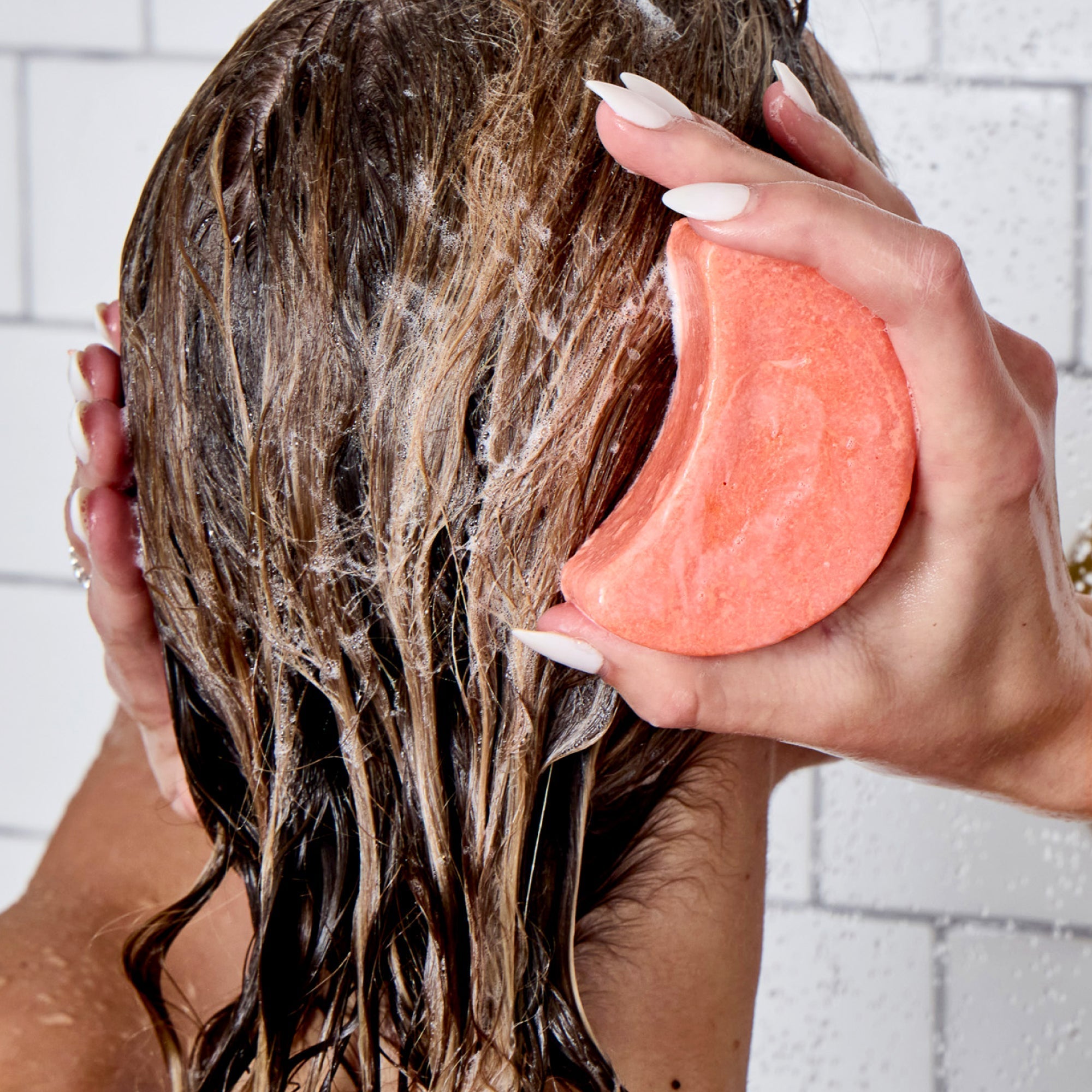How to Sleep With Curly Hair (and Still Wake Up With Curls)
For anyone with curls, bedtime can feel like a gamble. You can style your hair carefully during the day and still wake up to something unrecognisable in the morning.
Curls are fragile by design. Their twists make them prone to catching on fabric and losing moisture, and even the weight of your head on a pillow can shift their shape.
The tricky part is that no two heads of curls react the same way. Advice that works wonders for one person may do nothing for someone else.
This guide leans into that reality. You’ll recognise some ideas, others you might drop after one try. The aim isn’t perfect hair—it’s mornings that feel easier.
Why curls change while you sleep
Curls rarely wake up the way they went to bed. Fabric, lost moisture, and pillow pressure all play a part.
-
Friction. Cotton pillowcases rough up the cuticle, causing frizz. Satin or silk glide more smoothly. For some, that swap alone makes a difference.
-
Moisture. Curly hair tends to lose water faster due to its raised or looser cuticle structure. This means curves can dry out or lose shape overnight more quickly than straight strands.
-
Compression. Pillows flatten curls. Back sleeping usually affects the crown, side sleeping one half of the head. Few people stay still all night, so the results vary.
How much this matters depends on your hair. Waves may stretch out, coils might tighten, fine strands frizz, thicker ones slump.
Wash-day prep: laying the groundwork
Wash days set the tone. Freshly cleansed curls can either bounce back beautifully or unravel overnight.
Cleansing. Strong shampoos strip away the oils that keep curls elastic. A sulfate-free bar like Ethique’s Curl-Defining Solid Shampoo takes a gentler approach, with shea and cocoa butters to keep hair soft enough to style.
Conditioning. Curls lose water easily, so conditioner is non-negotiable. Ethique’s Curl-Defining Solid Conditioner skips silicones and instead uses shea butter and glycerine for hydration and slip, making detangling easier and leaving strands smoother.
Drying. Going to bed with wet curls almost guarantees stretched patterns by morning. Damp is safer. Some people plop with a cotton T-shirt, others diffuse until hair is halfway dry.
A little leave-in or curl cream on the ends helps lock things in. Some hair needs every step, others just two. You’ll only know by testing.
Off-day refresh: keeping definition alive
Curls usually go several days between washes. What you do on those in-between nights decides how well they hold.
Often, water is enough. A light mist or damp palms reawaken curl memory. Scrunching as you go helps the shape return. If ends feel dry, smooth in a tiny dab of conditioner or leave-in. Fine hair needs less; thicker or porous hair can take more.
Refresh sprays—store-bought or DIY mixes of water and conditioner—work the same way: small amounts of hydration without overload.
Co-washing is another option. Conditioner alone can refresh scalp and strands without a full shampoo. Ethique’s Curl-Defining Solid Conditioner doubles in this role. Some people co-wash every few days, others weekly. Too often and buildup sets in.
If you toss at night, a bonnet or loose pineapple helps. If you sleep still, mist-and-scrunch may be plenty. The goal isn’t perfection—it’s getting an extra day before you wash again.
Protective styles and fabric choices
Ask ten curl-wearers how they sleep, and you’ll hear ten variations. There’s no single method, but a few standbys repeat.
-
Pineapple. Hair gathered high with a soft scrunchie, curls spilling forward. Works best on longer hair; shorter curls can do two or three “mini pineapples.”
-
Loose buns or braids. Useful for coils and tighter curl patterns. Keep them relaxed enough to protect without leaving dents.
-
Bonnets and wraps. A staple in Black hair care, now widely used for all curl types. Satin or silk reduce friction and help hold in moisture. If bonnets feel awkward, satin-lined caps or sleep hoodies are alternatives.
Fabric matters too.Tests have shown cotton pillowcases can roughen the cuticle and spike frizz, while satin and silk help hair slip instead of snag.
Some people find a scarf alone is enough; others rely on a pillowcase as backup.
And none of these is foolproof. A bun secure at bedtime might unravel by midnight. That’s normal. You keep experimenting until you find what sticks.
Position and small adjustments
How you sleep shapes how your curls look in the morning. Back sleepers often flatten the crown, side sleepers squash one half, stomach sleeping spreads the pressure but rarely lasts all night.
Small tweaks add up. Loose scrunchies instead of elastics reduce dents. A humidifier offsets winter dryness. Adjusting pillow height can ease pressure. Even bedding matters—warm rooms encourage tossing, which increases friction.
One change won’t transform curls. Put a couple together, though, and mornings usually get easier.
Morning rescue
Even with the best prep, some curls won’t make it through the night. Mornings are about revival, not starting from scratch.
-
Mist and scrunch. Water reactivates leftover product and encourages curl shape to return.
-
Soften ends. Smooth a dab of conditioner or leave-in onto dry tips.
-
Lift roots. Diffuse on cool or low to restore crown volume.
-
Break the cast. Scrunch out stiffness from gels or creams with dry hands, or a drop of conditioner mixed with water.
Other quick fixes: a satin scarf pressed on for a few minutes calms frizz, and stretched ends often do better with a braid during the day than endless scrunching.
Some mornings curls bounce back fast. Others they don’t. The aim is hair you can manage.
Ethique’s curl-friendly routine
Protective tricks work best when the wash routine helps curls hold up overnight. Hydrated, defined hair has a better chance of surviving sleep.
Ethique’s Curl-Defining Solid Shampoo avoids harsh sulfates and relies on shea and cocoa butters to cleanse gently. Curls tend to hold their pattern longer when shampoo doesn’t overdry them.
Ethique’s Curl-Defining Solid Conditioner skips silicones that can coat hair without nourishing it. Instead, shea butter and glycerine hydrate and add slip. Curls detangle more easily, feel softer, and don’t carry heavy residue.
Together, the two bars are clinically proven to boost shine—by up to 104% on coily hair—and make curls six times more manageable. Beyond the numbers, they last longer than bottles, travel easily, and skip plastic packaging.

Final thoughts
Curly hair doesn’t follow rules. What works one night can flop the next.
That’s why bedtime routines should feel like a toolkit, not a formula. Some nights you’ll reach for a bonnet. Other nights, a braid. Sometimes a mist of water is enough. Over time you’ll figure out the mix that works for you—and it may change with weather, hormones, or haircut length.
The constants hold steady: gentle handling, enough moisture, and products that support curls instead of stripping them. Ethique’s Curl-Defining range fits that philosophy—bars that care for curls while cutting down on waste.
If most mornings you wake up and your curls still look like curls, that’s the win.
References:
1. Cloete, E., Khumalo, N. P., & Ngoepe, M. N. (2019). The what, why and how of curly hair: A review. Proceedings of the Royal Society A: Mathematical, Physical and Engineering Sciences, 475(2231), Article 20190516
https://pmc.ncbi.nlm.nih.gov/articles/PMC6894537/
2. Runkle, J. (2020, November 11). An overview on hair porosity. In NYSCC Scientific Blog. New York Society of Cosmetic Chemists. Retrieved from https://nyscc.org/blog/an-overview-on-hair-porosity/

 Impact
Impact Blog
Blog Store Locator
Store Locator


